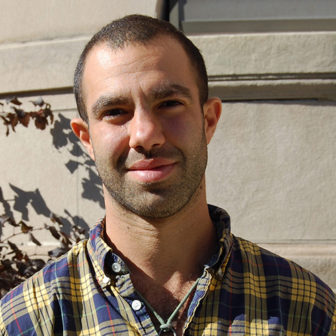The transition out of the juvenile justice system has considerable consequences for the transitioning youth, for the neighborhood into which the youth is transitioning and for society more broadly. For youth experiencing homelessness and insecure housing, that transition is particularly challenging. A recent study from Chapin Hall showed that nearly half the nation’s youth who have experienced homelessness have been involved in the justice system and that those without stable housing upon release are more likely to be rearrested.

Jonathan F. Zaff
However, states throughout the country have instituted relatively few intentional efforts to facilitate this transition back into communities, including transitioning into stable housing (with a few notable exceptions described below). One reason is arguably the focus on assumed deficits in youth who have been juvenile-justice-involved; an assumption that “those youth” brought a punishment on themselves and that society (i.e., taxpayers) do not have a responsibility to support their transition back into their communities.

Max Margolius
The question of responsibility aside, taxpayers do, in fact, have incentives to support this transition. A transition that decreases recidivism rates (and the criminal behaviors that result from recidivism) means safer neighborhoods and fewer tax dollars going to incarceration.
Focusing attention on the transition out of the juvenile justice system should be undergirded by a recognition that youth — including justice-connected youth — have the potential to thrive academically, vocationally and throughout all aspects of their lives; what is considered a positive youth development approach (PYD). We know this from science; that if we, as a society, provide young people with the supports that they need based on their own lived experiences, then they will have a good chance of getting back on positive educational and other life pathways.
We have heard this narrative in the work we have done over the past seven years with young people who have left high school without graduating or have disconnected from the workforce; many of whom were involved with the juvenile justice system. They spoke of the multiple adversities they had experienced, the choices they needed to make in order to resolve those adversities (e.g., to put food on the table for their families) and the outcomes they faced as a result of those trade-offs (e.g., leaving school, breaking the law).
For more information on Re-entry, go to JJIE Resource Hub | Re-entry
Young people who leave the justice system have many of the same issues they had when they entered the system: needing to support their families, deal with negative — and often abusive — family dynamics, resolve income needs, address mental health issues, and get sufficient and stable housing. Considering that these factors contribute to juvenile crimes and that persistent violators are more likely to continue to commit crimes, smoothing the transition out of the juvenile justice system would provide benefit the youth by helping them stay out of the criminal justice system and having stable employment, benefit communities by creating safer neighborhoods and benefit society by lowering the burden on taxpayers.
All young people have a higher chance of thriving when they feel a sense of safety and permanence; stable housing is a foundational component of that safety and permanence. A transition that is characterized by housing instability puts the transitioning youth at heightened risk for engaging in criminal behaviors or being cited for panhandling and other “quality of life” offenses. Justice system involvement may exacerbate housing instability since being arrested may compromise lease terms or leave their families unable to collect public benefits; meaning barriers to a stable home even for youth who had stable housing prior to arrest.
What municipalities should ask
When deciding a program or a policy to implement, we recommend that states and cities should begin by answering the following three questions:
- Who are the young people you are supporting? Although this may seem obvious, policymakers and practitioners often jump to solutions without having a firm understanding about who young people are, what their experiences have been and what needs and strengths they have.
- What supports do the young people need? Once the authentic lived experience is understood, the next question is to figure out what supports would be best for encouraging their strengths and resolving any needs.
- What are the programs and policies that would get young people what they need? After determining the supports that align with the lived experiences of the youth, the question is how to get young people those supports.
Having understood the realities that youth face before, during and after justice involvement, states are beginning to draw upon developmental science, emerging research on the prevalence and impact of trauma, and the unique needs and assets of youth in order to design approaches aimed at providing more supportive experiences within the justice system and more concerted efforts to support their transition out of system involvement. While few of these approaches have undergone rigorous study on their efficacy, they represent efforts to apply PYD principles in the context of serving youth transitioning out of the justice system. These PYD approaches:
- Operate on the knowledge and belief that all young people have agency and the potential to thrive.
- Are most effective when they are responsive to the needs and strengths of each young person.
- Connect young people experiencing homelessness with adults who can provide direct supports and connect youth with needed resources.
- Provide comprehensive transition planning to and through a young person’s system involvement.
- Provide structures and avenues so that young people are able to lead and shape their own transition and housing plans.
- Enhance collaboration among youth-serving systems — including data sharing agreements — that allow for more efficient service provision and clearer system navigability for young people struggling with housing insecurity.
Programs to look at
Some examples of PYD-informed programs that at least have data to suggest their effectiveness include:
- The Crossover Youth Practice Model (CYPM) out of the Coalition for Juvenile Justice Reform at Georgetown University provides an integrated framework to support cities and counties across the country in enhancing system collaboration and care for youth who are involved, or who are at risk of becoming involved, in both the welfare and justice systems. Returning to a stable home is a focal outcome for this model. CYPM is currently employed in more than 100 communities nationwide and has been evaluated by multiple third parties that show CYPM to be a promising approach. CJJR also supports the Juvenile Justice System Improvement Project (JJSIP), an evidence-based framework similar to CYPM but focused on improving outcomes for youthful offenders, not necessarily dual-involved youth. JJSIP is currently being implemented in Arizona, Connecticut, Pennsylvania and Florida.
- Several states are in the process of implementing and evaluating Continuum of Care (CoC) response systems for dually involved youth including in Sacramento, Calif. CoC efforts aim to enhance cross-sector collaboration in order to prevent involvement in the justice system, mitigate the effects of housing insecurity, and provide permanency planning and transition support in the context of a multiagency team of supportive adults.
- Massachusetts’ Department of Youth Services (DYS) offers support services to youth transitioning out of the justice system through their Youth Engaged in Services (YES) program. The program allows youth to have meaningful ownership over their own transition plans and facilitates access to individualized resources such as housing and educational assistance, and health care needs. These resources occur in concert with continued connections to their DYS caseworker and treatment team, even after they have aged out of mandatory DYS oversight. Initial data from the state suggest that YES reduces recidivism among youth who engage with these additional supports.
More rigorous, systematic evaluations are needed to verify the efficacy of these and other, similar efforts throughout the country. However, these promising examples are beginning to show that if a juvenile justice system understands who their youth are and knows the supports that would put them on more productive pathways, including stable housing, they can develop initiatives that will provide these supports. Maybe most importantly, all these efforts recognize the inherent potential their youth have to thrive in life. By aligning tangible and emotional supports with the youth’s needs and strengths, the youth, their communities and broader society can, indeed, benefit in substantial ways.
For additional guidance as well as more national and statewide policy and practice examples, see the Center for Juvenile Justice Reform (CJJR), The Coalition for Juvenile Justice, The National Alliance to End Homelessness and the National League of Cities’ Institute for Youth, Education and Families.
Jonathan F. Zaff, Ph.D., is a research professor in applied human development at the Wheelock College of Education & Human Development, and the director of the CERES Institute for Children and Youth. The CERES Institute exists to drive positive educational and life conditions for children and youth, especially those in historically disenfranchised communities, so that they may emerge from childhood as thriving adults.
A former teacher and school administrator, Max Margolius is currently a doctoral student at Boston University where his research specializes in positive youth development and understanding how to create more supportive school communities.

What a great article. Multisystemic Therapy (MST) is a scientifically proven intervention for at-risk youth used in Juvenile Justice systems around the world. MST has more than 75 published studies that demonstrate how MST reduces criminal activity and keeps youth in the home. MST features the largest body of evidence, by far, of successful interventions for high-risk youth. One of our adaptations MST- Family Integrated Transition (MST-FIT) provides targeted services for youth who are transitioning back to the community from being incarcerated.
Loved this quote in the article, “if we, as a society, provide young people with the supports that they need based on their own lived experiences, then they will have a good chance of getting back on positive educational and other life pathways.”
To learn more about MST, do not hesitate to contact us at info@mstservices.com